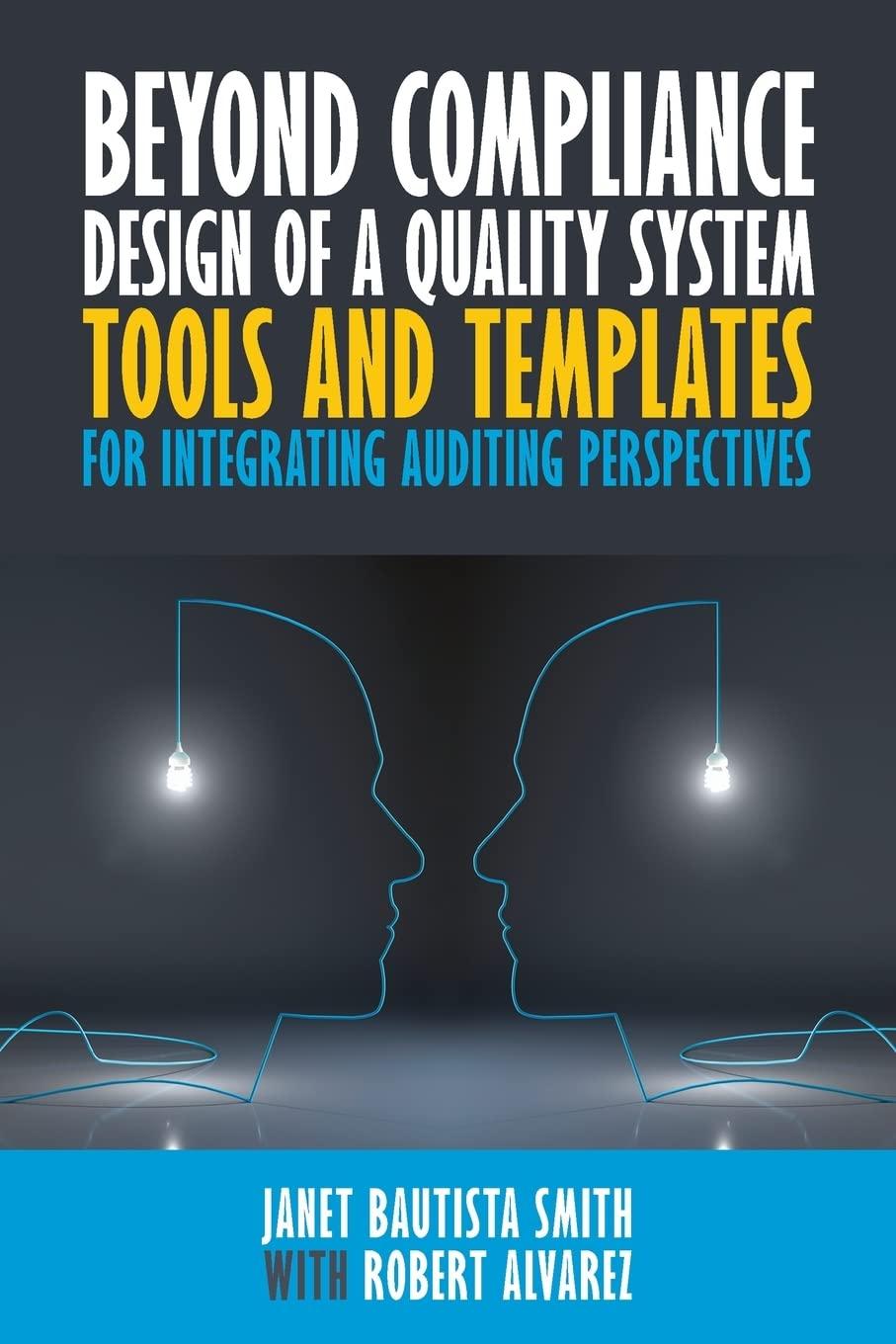Question
4. On January 1, Leveler Corporation leased equipment to Messy Company. The present value of the lease payments is $200,000 and Levelers cost of the
4. On January 1, Leveler Corporation leased equipment to Messy Company. The present value of the lease payments is $200,000 and Levelers cost of the equipment was $125,000. The lease is properly classified as a sales-type lease. In comparison to the entries that would have been made if this lease did not include a selling profit, how are the entries affected because this lease includes a selling profit?
a The entries made by Leveler are not affected.
b The entries made by Messy are not affected.
c The entry made by Leveler to record the receipt of the first lease payment also will include the sales revenue and cost of goods sold.
d The entry made by Messer to record the payment of the first lease payment also will include the sales revenue and cost of goods sold.
e Each of the entries made by Leveler over the term of the lease will include a portion of the sales revenue and cost of goods sold.
15. If the option is reasonably certain to be exercised, how does the inclusion of a provision that gives the lessee the option to purchase the lease asset during the lease term at a specified exercise price impact that accounting for that lease? (Select all that apply.)
Check All That Apply
a The lessor must classify the lease as a sales-type lease.
b The lessee has the option of classifying the lease as an operating lease.
c The lease term is assumed to end on the date that the option is expected to be exercised.
d In the present value calculations, the lessor adds the present value of the exercise price to the present value of the periodic lease payments to determine the amount recorded as the lease receivable.
e In the present value calculations, the lessee subtracts the present value of the exercise price from the present value of the periodic lease payments to determine the amount recorded as the lease liability.
14. When a lessee makes an entry at the beginning of a lease, which of the following are included in the amount that will be recorded as both a right-of-use asset and a lease liability? (Select all that apply.)
Check All That Apply
a Fair value of the asset leased
b Present value of a cash payment expected to be made at the end of the lease term because of a guaranteed residual value
c Present value of expected residual value
d Present value of periodic lease payments
e Sum of the payments made over the term of the lease
12. Assume that an asset being leased is expected to have a residual value at the end of the lease term. What will be the impact of the residual value? (Select all that apply.)
Check All That Apply
a It will cause the lease payments by the lessee to be higher.
b It will affect the lessors accounting for the lease.
c At the beginning of the lease, the lessor will add the present value of the residual value to the amount of the lease receivable that would otherwise be recorded under the lease.
d A gain or loss will be recorded at the end of the lease if the actual residual value is different than that estimated.
9. Assume that a lessee had no significant economic incentive as of the beginning of a 10-year lease for a storefront to exercise an option to terminate the lease after 5 years. However, by the end of the fourth year, the lessee has decided to close the store within the next year, making termination of the lease reasonably certain. At the end of the fourth year, the lessee would: (Select all that apply.)
Check All That Apply
a Remeasure the lease liability.
b Determine the full term of the lease to be a total of four years with no years remaining.
c Calculate the present value of the ten lease payments at the time of the reassessment using market interest rates at the time of the reassessment.
d Record an entry to decrease the lease payable account balance.
8. Under an operating lease: (Select all that apply.)
Check All That Apply
a The lessee reports amortization expense and interest expense separately in its income statement.
b The lessor reports a single amount of lease revenue, which is equal to interest revenue plus amortization revenue, in its income statement.
c The lessee reports lease expense on a straight-line basis and the lessor reports lease revenue on a straight-line basis over the lease term.
d Each of the entries made by Messy over the term of the lease will include a portion of the sales revenue and cost of goods sold.
Step by Step Solution
There are 3 Steps involved in it
Step: 1

Get Instant Access to Expert-Tailored Solutions
See step-by-step solutions with expert insights and AI powered tools for academic success
Step: 2

Step: 3

Ace Your Homework with AI
Get the answers you need in no time with our AI-driven, step-by-step assistance
Get Started


